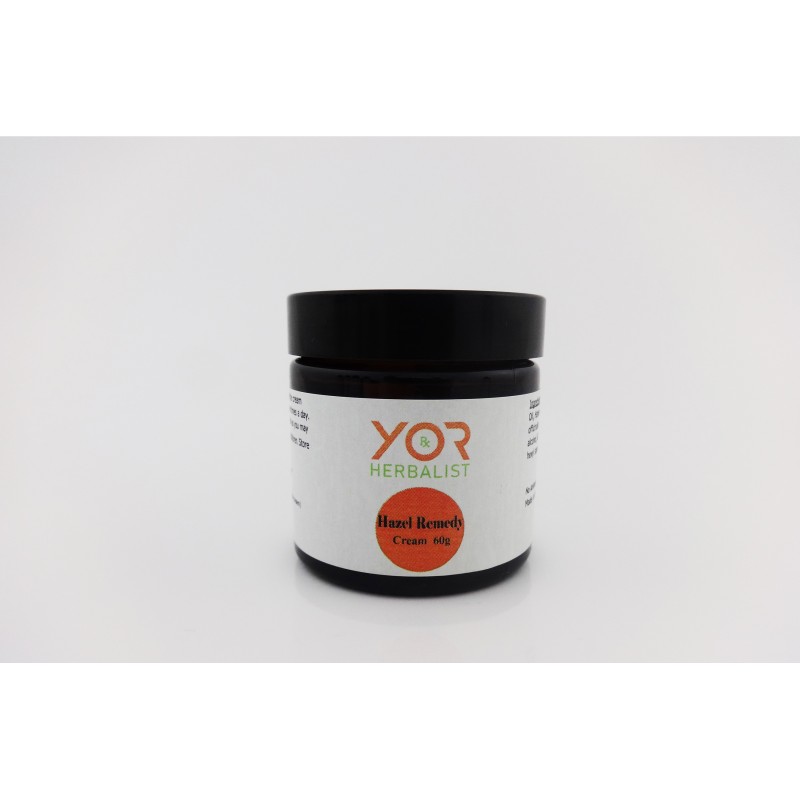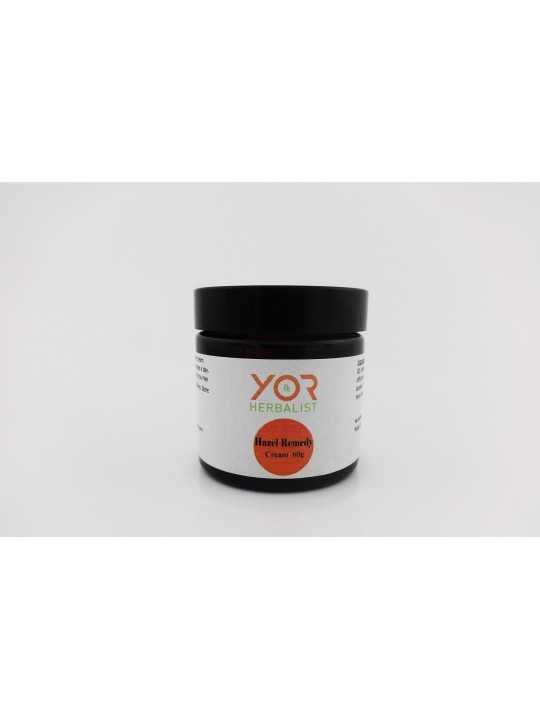Hazel Remedy Cream 60g
Availability:
Pre-Order
Common Names: Witch hazel, Spotted Alder, Winter bloom, Snapping
Hazelnut
Family: Hamamelidaceae
Botanical
description: It is a small deciduous woodland tree that
grows up to 5m. The leaves are oval with coarsely toothed edges. The flowers
are yellow with a strong scent and appear in the winter months, hence the name
Winter Bloom. The flowers are followed by brown fruit capsules that eject
the ripe seeds up to 4 m away from the tree hence another common name of
snapping hazelnut. Many of the plants grown in this part of the world in
people’s gardens are hybrids with different colour flowers which probably have
some medicinal action.
Location: Canada and Eastern USA. Cultivated elsewhere.
Part
used: Leaves, bark, distilled witch hazel
water. Nuts are eaten as a food
Cultivation/Harvesting: The leaves are gathered in the summer and
dried. The bark is gathered in the autumn and dried as quickly as possible.
History/Folklore/Taste/Energetics: Cooling and drying. A traditional remedy for the
eyes, cooling tired and sore eyes. It is also valuable for treating bruising
and varicosities. For many people its scent reminds them of childhood
bumps and bashes being tended and its aroma seems rather reassuring. For women
after childbirth it is a most wonderful healer and restorer of the perineum and
vulva.
Constituents: Leaves- tannin up to 10%, mainly gallic tannins and
also condensed catechins and proanthocyanidins, Saponins, Choline, Resins,
Flavonoids
Bark-also some volatile oil, fixed oil and up to
6% tannins.
Actions: Astringent, Anti-haemorrhagic, Anti-inflammatory,
Tonic, Sedative
Traditional
and current uses:
·
Compresses or cream to treat bruises, bleeding, haemorrhoids and other
varicosities
·
Compresses or cream for varicose eczema and other tender and itchy skin
conditions
· A
lotion is prepared to use to treat cysts and skin tumours.





Reviews (0)